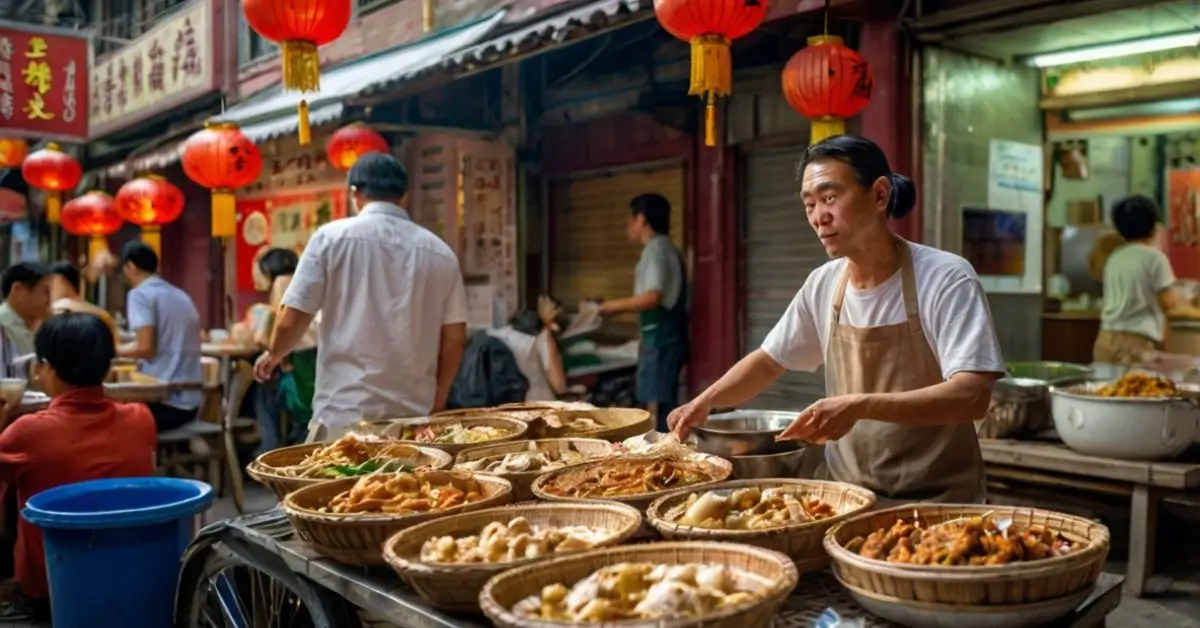Chinatown hawker leftovers consumption is gaining attention as a sustainable way to reduce food waste while enjoying delicious, affordable meals. Hawker centers, known for their vibrant food culture, often have unsold dishes that can be repurposed or consumed responsibly. This article explores the growing trend of Chinatown hawker leftovers consumption, its benefits, challenges, and how it contributes to a greener future.
The Rise of Chinatown Hawker Leftovers Consumption
Hawker centers are the heart of street food culture, but they also generate significant food waste. The concept of Chinatown hawker leftovers consumption encourages people to buy or collect unsold food at discounted prices before it goes to waste. This movement aligns with global sustainability goals while supporting local vendors.
Why Focus on Hawker Leftovers?
-
Reduces Food Waste – Millions of tons of food are wasted annually; consuming leftovers helps mitigate this.
-
Saves Money – Unsold dishes are often sold at lower prices, benefiting budget-conscious consumers.
-
Supports Hawkers – Vendors recover costs instead of discarding perfectly good food.
How Chinatown Hawker Leftovers Consumption Works
Several initiatives promote this practice:
-
Discount Apps – Some platforms notify users about leftover dishes available at reduced rates.
-
Community Drives – Volunteers collect and redistribute unsold food to those in need.
-
Personal Purchases – Diners can directly ask hawkers for leftovers near closing time.
Benefits of Chinatown Hawker Leftovers Consumption
Environmental Impact
Food waste contributes to greenhouse gas emissions. By participating in Chinatown hawker leftovers consumption, individuals help reduce landfill waste and carbon footprints.
Economic Advantages
-
For Consumers – Access to affordable meals.
-
For Hawkers – Additional income from otherwise wasted food.
Social Responsibility
This movement fosters community bonding, as people collaborate to minimize waste and assist underprivileged groups.
Challenges and Solutions
Common Obstacles
-
Stigma Around Leftovers – Some perceive leftover food as low-quality.
-
Logistical Issues – Coordinating food collection and distribution can be complex.
Overcoming Barriers
-
Awareness Campaigns – Educating the public on food safety and sustainability.
-
Partnerships – Collaborating with NGOs and tech platforms to streamline redistribution.
Comparison: Leftovers Consumption vs. Traditional Waste Disposal
| Aspect | Leftovers Consumption | Traditional Waste Disposal |
|---|---|---|
| Environmental Impact | Reduces landfill waste | Increases methane emissions |
| Economic Benefit | Saves money for consumers & hawkers | No financial return |
| Social Value | Strengthens community efforts | No direct social benefit |
Conclusion
Chinatown hawker leftovers consumption is more than a trend—it’s a movement toward sustainability. By embracing this practice, we can combat food waste, support local businesses, and promote eco-conscious living. Whether through apps, community efforts, or personal choices, everyone can contribute to a greener future.
FAQ’s
1. What is Chinatown hawker leftovers consumption?
It’s the practice of consuming or redistributing unsold hawker food to reduce waste.
2. Is leftover hawker food safe to eat?
Yes, if stored and handled properly, it remains safe for consumption.
3. How can I participate in this movement?
Use food-saving apps, buy leftovers directly from hawkers, or join community food drives.
4. Does this help hawkers financially?
Yes, selling leftovers provides additional revenue instead of discarding food.
5. What are the environmental benefits?
Less food waste means reduced methane emissions and landfill usage.
6. Are there initiatives promoting this concept?
Yes, several apps and NGOs work on food redistribution programs.

